Device Disconnected Alert from HWg-Cloud: Long-term reliable monitoring system
A remote monitoring device is useful when it's working. There can be a power cut at the remote site or a connection failure, which means that alerts will not be delivered. To warn you in these moments, all portals (including free HWg-cloud.com) can alert you when the remote monitoring device is disconnected.
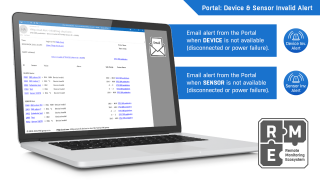
The product we sell to our customers in the HW group is the delivered alert message, not an alerting device or sensor. Therefore, we want to warn our customers even in moments when the external environment (power or connectivity) is not working as usual.
To provide long-term reliable monitoring system, we offer "Device Disconnected Alert" feature even in the free version of the SensDesk Technology based portal - www.HWg-cloud.com.
Alarm situations:
- Measured sensor value is higher/lower than defined limit.
This is a standard alert. - Measured sensor disconnected (e.g. torn off the connected port).
It's standard alerting. - The monitoring device to which the sensor is connected has no power.
It's a device disconnected alert. - The monitoring device does not have an Internet connection.
It's a Device Disconnected alert.
All in all, it's a pretty good protection of the environmental situation at your remote site. To achieve easy-to-use, long-term reliable monitoring, we use the Protal, because scenarios (3) and (4) can't be realized without a higher level system.
What happens if one or more of the sensors connected to the monitor are disconnected, torn off, or damaged in any way that prevents them from operating normally?
Standard alerting from the device
It can be done with the Portal, but also from the monitoring device such as Poseidon2 or STE2.
You'll see something like this in the device interface:

For the (2) Sensor disconnected scenario, you can also define an alert, -999.9 degrees Celsius means sensor not found and the device can alert you of this situation.
Email alert from the device must be converted to email. Feel free to use your company SMTP server, but HW group would like to warn you against using public SMTP servers. We have an article about why it's not a good idea (not long-term reliable): https://www.hw-group.com/support/use-a-public-smtp-server-not-recommended
We recommend using the Portal. Even for free, HWg-cloud.com can provide you with much better service than SMTP servers from Google or Yahoo, for example.
Standard alerting from the Portal
In the portal, you can also see graphs of the values over time. If you get a "Sensor Invalid" state:
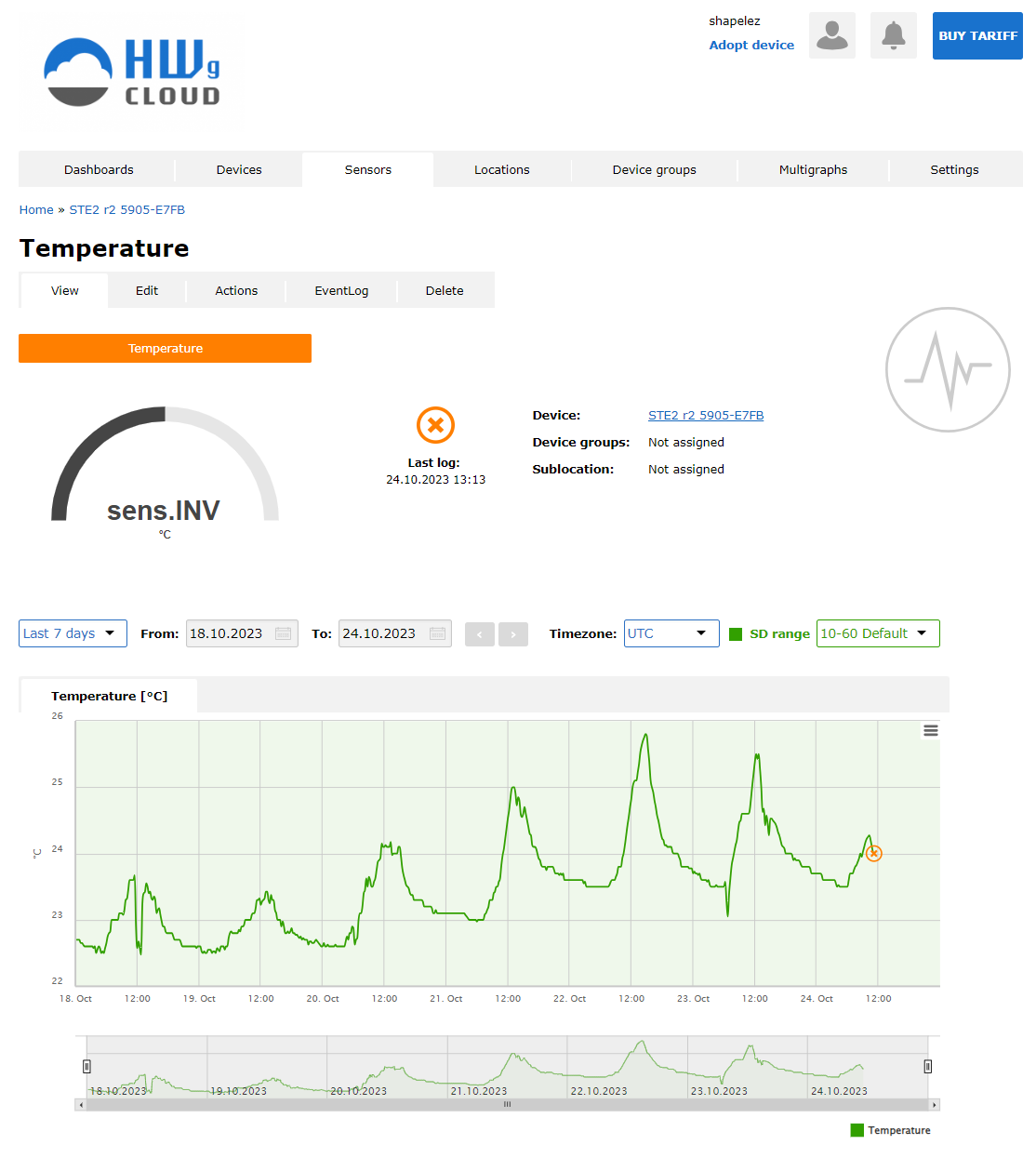
This is different from the temperature alert and could be sent to the recipient as a different type of alert message. It indicates sensor failure rather than temperature fluctuation, which is more accurate and correct in this case.
A cable could be accidentally pulled or damaged in some way, preventing the sensor from sending the monitored value to the monitoring device. And the alarm receiver could distinguish such a situation from a true temperature alarm. The former indicates a sensor malfunction, the latter a change in the monitored environment.
Portal reaction to disconnected device
What happened there? There is really no way to know. It could be the entire monitored facility that went down, or just the specific power distribution unit, or a specific plug that "fell out of the socket". Things happen. You just need to know what exactly happened so you can take appropriate action.
If the HWg monitoring device loses power, the portal - in this case HWg-cloud.com - will display the following message:
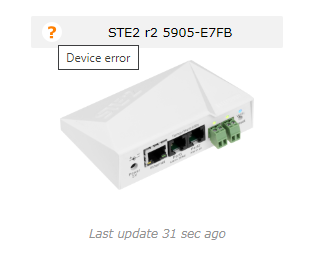
How fast do I get information that the device is not connected?
In the case of the HWg-cloud.com service, it takes less than an hour to definitively determine that the device itself is not working properly, thus changing the device status in the account:
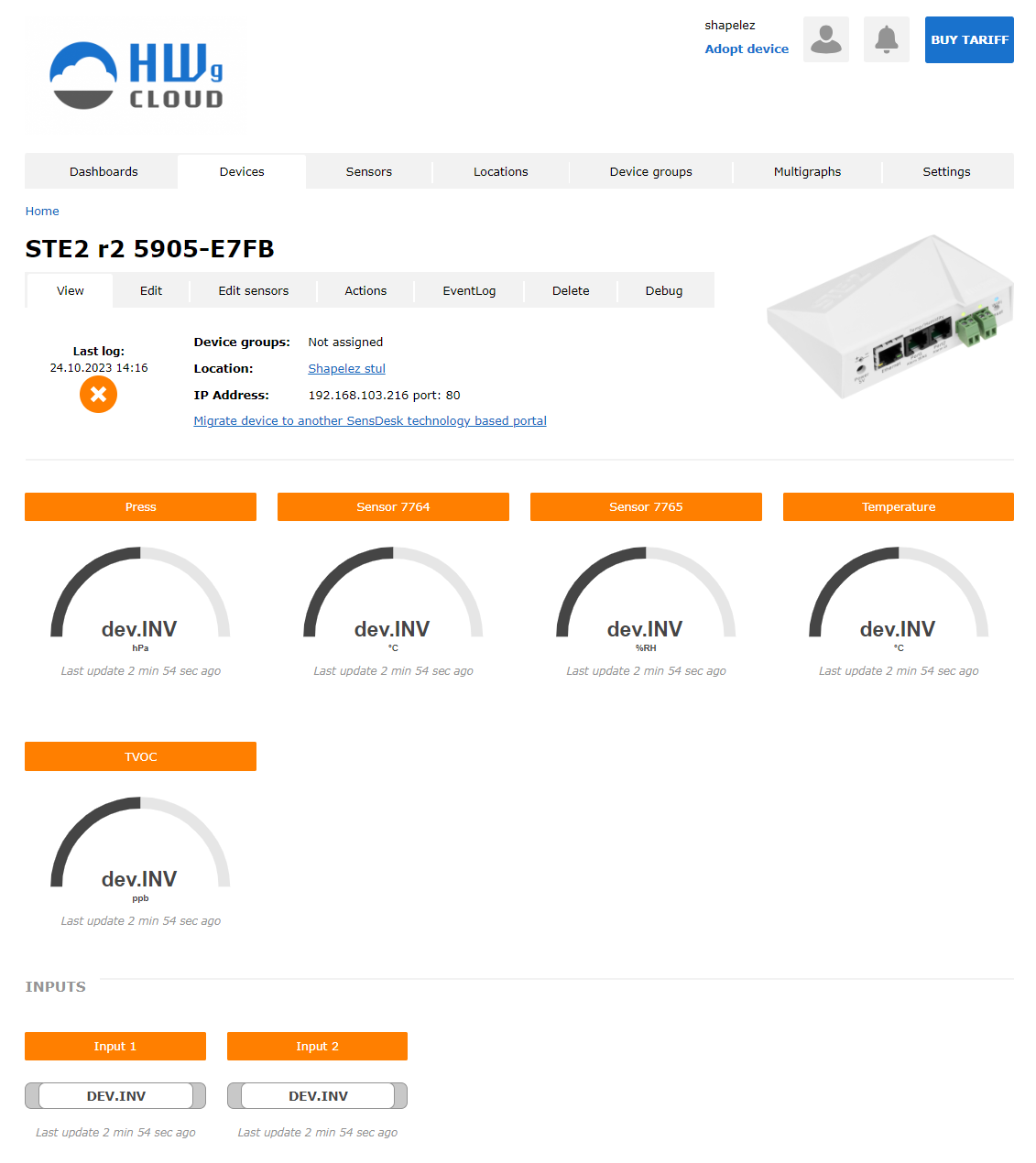
And trigger an alert sent directly from the portal. Understandably, if the power goes out - no SMTP destination would be able to receive an alert because it couldn't be sent. When the device comes back on, its status in the portal changes within a minute of the initial data push.
Disconnected devices on the sensor graph:
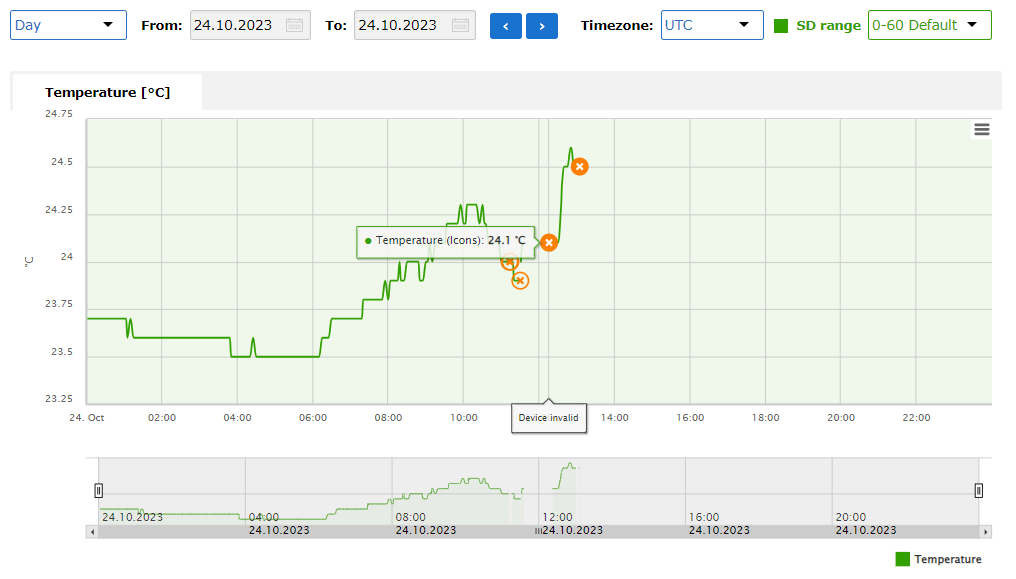
Device invalid icon in the daily graph, followed by a continuation of the monitored value with another Device invalid icon (and a possible alert) at the end.
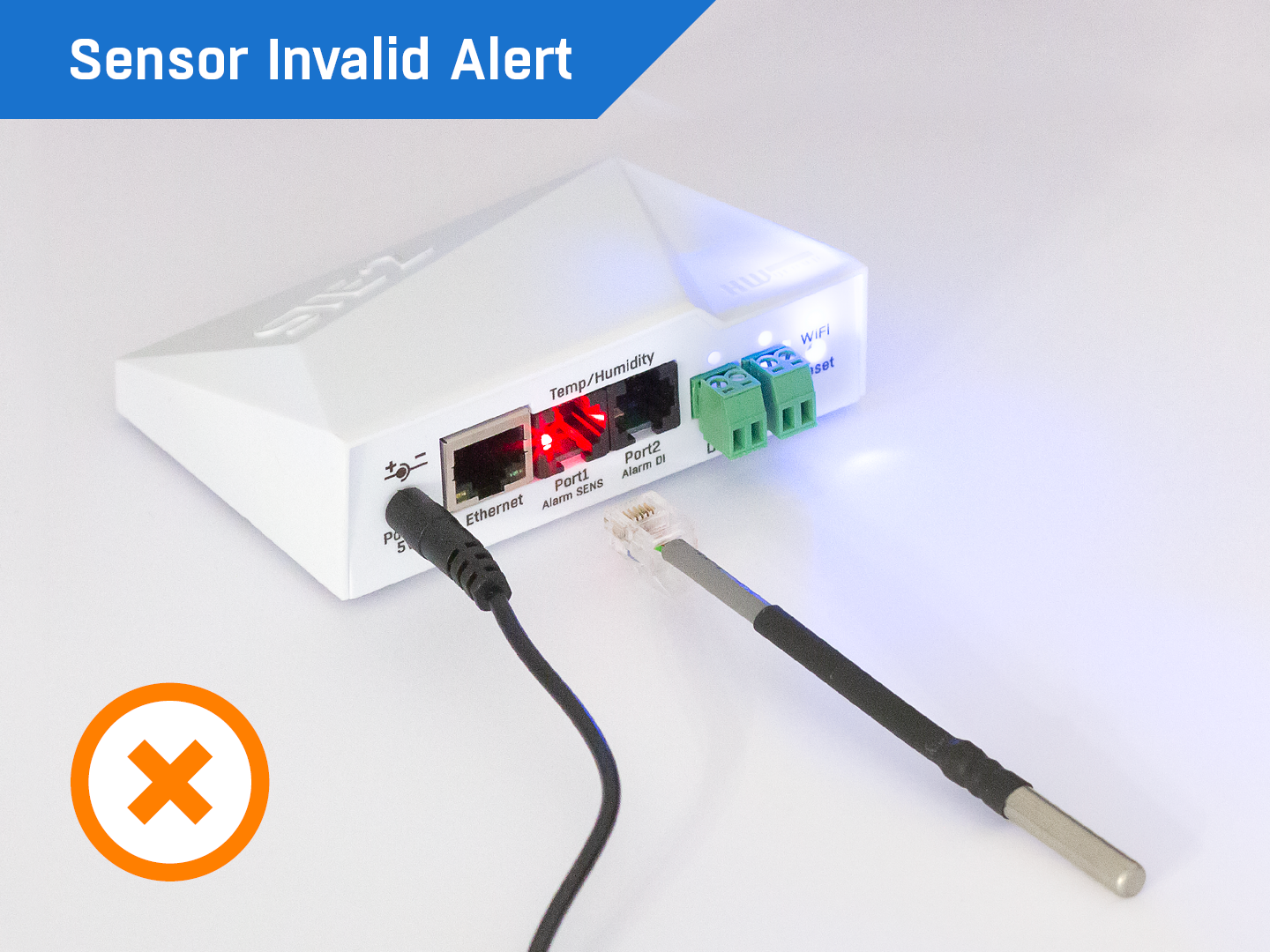
Summary
Using SMTP server to send e-mail alerts from the device is a common way. Better than using public SMTP server is to use the Portal service from HW group, it's more long-term reliable and free of charge service. Above shown graphs of values, and a central place to manage email alerts is yet another bonus you get besides the device disconnected alert. It's an alert that is sent the moment the monitoring device (STE2, Poseidon, Ares, ..) is turned off or disconnected from the network.
The portal service monitors if the monitoring device is connected & working properly. It increases the reliability of the entire Remote Monitoring Ecosystem.












